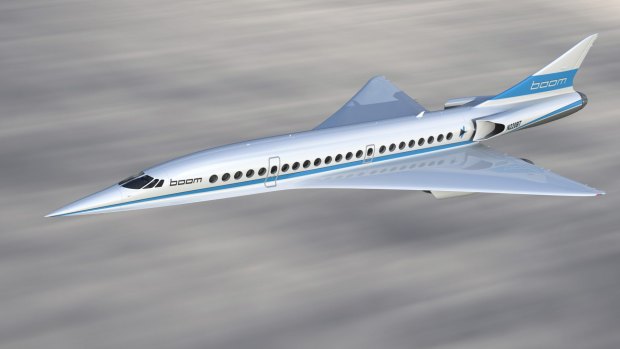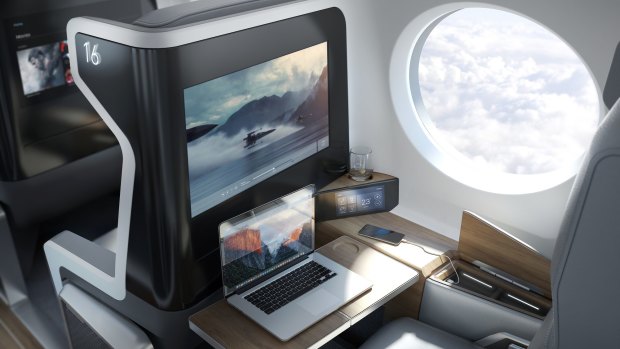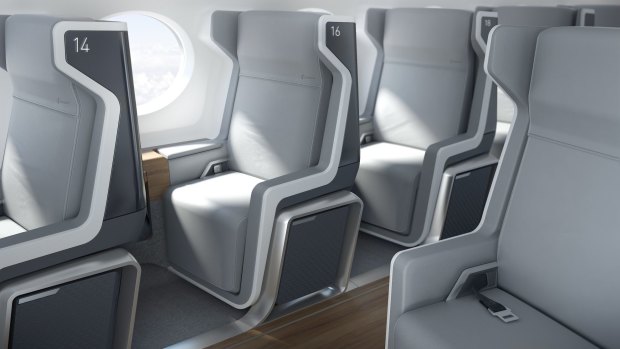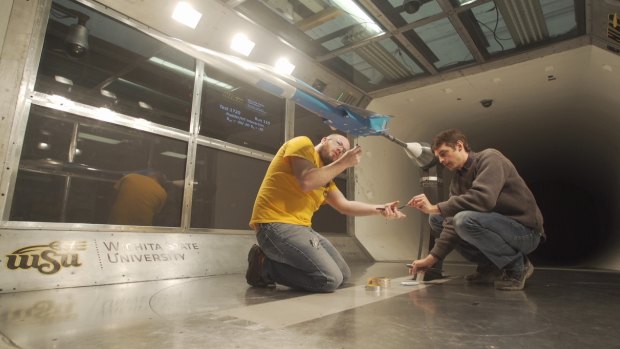
Japan Airlines has invested $10 million in the development of Boom's new supersonic airliner.Credit: Boom Supersonic
Supersonic jetliner travel, which ended more than a decade ago with the Concorde, got a boost as Japan Airlines agreed to invest $10 million ($A13 million) in Colorado startup Boom Technology.
Japan Air also took an option to purchase as many as 20 of the aircraft Boom is developing, the two companies said in a statement on Tuesday. The Asian carrier is the second company to announce an intention to purchase Boom's supersonic jet, after billionaire Richard Branson's Virgin Atlantic.
Boom is planning to build a 45-to-55 seat aircraft that cruises at Mach 2.2 (2335 kilometres per hour) -- capable of whisking passengers between New York and London in about three hours. The Concorde, flown by British Airways and Air France, retired in 2003 after almost three decades in service as customers abandoned the jets amid hefty operating costs.

The interior seat designs for Boom's supersonic aircraft.
"It's a signal to the rest of the ecosystem that the customer interest in this airplane is real," Boom Chief Executive Officer Blake Scholl said. While the company is well capitalised, "the investment was not about the dollars, it was about the symbolism and the meaning of the dollars" to the aviation industry.
Japan Air spent more than a year contemplating the aircraft and how it would fit into its fleet and premium service offerings, he said. The carrier said it would work with Boom "to refine the aircraft design and help define the passenger experience for supersonic travel."
The jet, targeted to enter service in the middle of next decade, will have a range of 4500 nautical miles (8334 kilometers), or roughly the distance between Beijing and London.

The interior seat designs for Boom's supersonic aircraft.
Future Friends
"The future needs friends," Scholl said on Twitter ahead of the announcement. "Pioneers who stick their necks out, take a stand, support the new, the half-born, while uncertainty remains and the risk of failure is still quite real."
Boom had commitments for 75 planes and customers have paid significant deposits, he said at the Paris Air Show in June. Orders were spread across five airlines, not all of which have been publicly disclosed and More buyers will be revealed in the foreseeable future, Scholl said.

A model of the Boom supersonic jet undergoes wind tunnel testing.Credit: Boom Supersonic
The planemaker is still studying where it will assemble its supersonic aircraft. The company plans to issue a request for proposals in the first quarter for its factory, which will offer "thousands of jobs," Scholl said. Boom will select a site late next year, with the facility likely to be completed in late 2019 or 2020.
Boom, which says a flight from San Francisco to Tokyo could be completed in five and-a-half hours, has already struck a deal with the Spaceship Co., the manufacturing division of Richard Branson's Virgin Galactic, to use that company's engineering, design, and flight-test support services.
Engine Choice
Engine selection, which is crucial for giving customers real cost and performance data, remains an outstanding issue. Boom is using a General Electric engine for its demonstration aircraft. That plane, which passed a preliminary design review in May, is scheduled to fly next year.
On the Concorde, deep-pocketed passengers could fly the Atlantic at twice the speed of sound from 1976 to 2003. After costs and noise complaints killed off that supersonic jet, GE, Lockheed Martin, the National Aeronautics and Space Administration and startups including Boom are studying new designs and technology that could make supersonic flight a commercial reality.
Boom in November hired Bill James, a former Airbus executive who led wing design on the A380 superjumbo, as its vice president of production operations. The company has been in talks with about 20 airlines to sell the plane.
Bloomberg
Sign up for the Traveller Deals newsletter
Get exclusive travel deals delivered straight to your inbox. Sign up now.